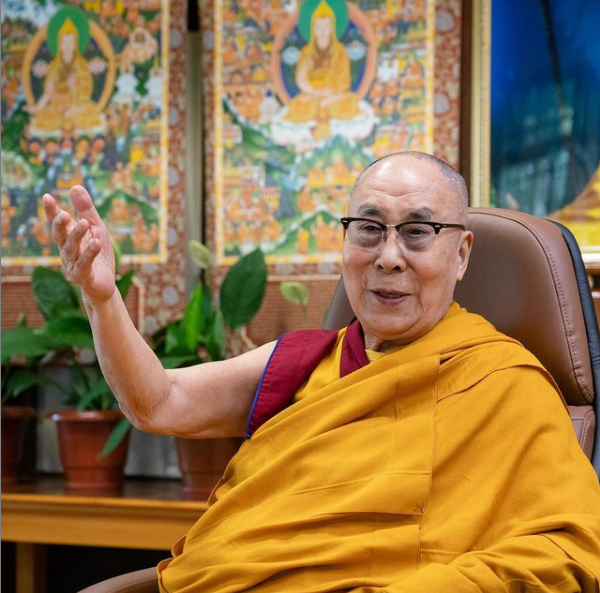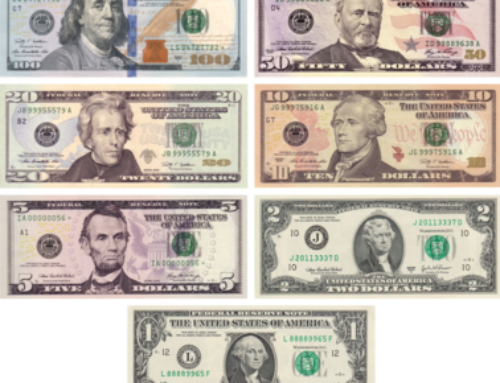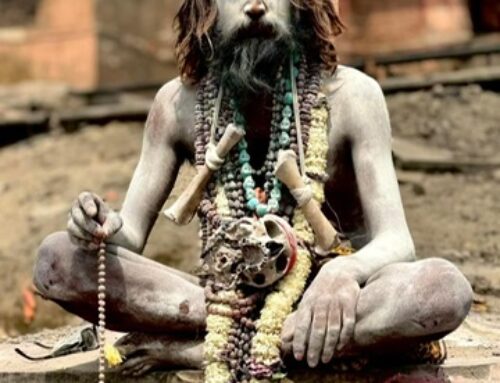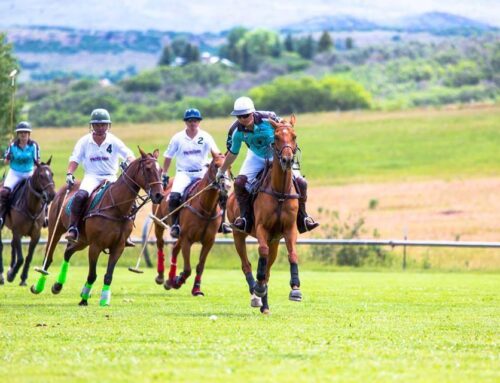Eat Barley Porridge Breakfast, Nothing Past Noon, Eat Occasional Meat, Fresh Grown Veggies, and Wash Down with Horse Milk Tea and Limit Your Vices
Excerpted from :
https://www.mashed.com/130329/this-is-what-the-dalai-lama-really-eats/
This Is What The Dalai Lama Really Eats
BY CHRIS HEASMAN/AUG. 3, 2018
Tenzin Gyatso, otherwise known as the 14th Dalai Lama, is one of the world’s foremost spiritual and religious leaders. As a leader of the Tibetan strand of Buddhism, he has lived a life almost perpetually in the spotlight, having been enthroned at the age of 4, forced out of Tibet after the 1959 uprising, and awarded the Nobel Peace Prize in 1989.
During his early years in Tibet, the Dalai Lama would have eaten meat as part of his diet because of the country’s reliance on consumable livestock in lieu of sufficient vegetable crops. When he fled to India in 1959, he adopted a lacto-ovo vegetarian diet in accordance with the beliefs of many of the country’s own Buddhists. Unfortunately, after 20 months, he contracted hepatitis and developed gall bladder disease, and his doctors insisted he resume eating meat for health reasons.
Today, it’s difficult to come by meat in the vegetarian monasteries in south India, where he spends most of his time. In 2010, he told NDTV that he usually eats meat once or twice a week, and otherwise lives as a vegetarian. However, when traveling, he does eat meat dishes that are offered to him.
That means no dinner, no afternoon meals and absolutely no snacking whatsoever for the rest of the day. Instead, he spends the afternoons discussing work, holding audiences and conducting interviews. By the time most people are sitting down to enjoy dinner, the Dalai Lama has retired to bed — which isn’t much of a surprise when you consider how early he starts his days.
The Dalai Lama’s day begins at 3 a.m. He takes a quick shower before praying and meditating until 5 a.m. He then goes for a short walk around his compound (or hops on the treadmill if it’s raining) before heading to breakfast. His first meal of the day usually consists of porridge, bread, tea and tsampa. Tsampa is a type of flour made from roasted barley. It’s a crucial part of the Tibetan diet and is usually mixed with tea and yak’s milk.
We can’t emphasize enough just how vital tsampa is to the Tibetan cultural identity — it’s used in Buddhist rituals, consumed by athletes, and even gives its name to a Tibetan font. Tibetans are sometimes even referred to as tsampa-eaters, since it’s common to all the different factions in Tibetan culture — not too surprising since barley is one of the few crops that does well in the region. It seems only right that it’s also how the Dalai Lama begins the day.
Noodles constitute an integral part of the pan-Asian culinary culture, and this is no different in Tibet. According to one former member of the Dalai Lama’s kitchen staff, His Holiness was, like many of his fellow Tibetans, a big fan of noodles. One of the dishes he enjoys is thukpa (also know as shey-thuk): a noodle soup which originated in eastern Tibet and northern Nepal, made with pretty much any vegetables available. Among the many specific styles of noodle served in the Dalai Lama’s kitchens included gya-thuk, a Chinese noodle and then-thuk, a flat-pulled noodle.
He’s said to also be partial to momo, a type of dumpling made from flour and water and filled with meats (such as pork, chicken, goat or buffalo) and vegetables. Shapale is a similar dish — meat contained inside in a fried pastry — that was also frequently served up for His Holiness. Considering the Dalai Lama’s schedule, it’s likely that these dishes are usually served for lunch, just before midday.
It probably comes as no surprise to find that the Dalai Lama doesn’t drink alcohol. In a 2012 interview he explained that “If your mind, disturbances, unrest, then there’s not a choice, relying tranquilizers or drugs or alcohol. My mind, our mind, quite peaceful. So no need these things.”
His aversion to alcohol doesn’t just stop with himself, however. In 2017, he told John Oliver that he managed to cure the entire nation of Mongolia of alcoholism in the 90s by introducing horse milk to their diets. According to the Dalai Lama itself, he suggested to the Mongolians that they “drink much less vodka” and, instead, begin to drink horse milk. “Since then,” he said, “I think majority of Mongolians no longer any drink.”
The idea behind that is that airag, a sour, fermented drink made from mare’s milk, has a much lower alcohol content than the vodka they were drinking, according to NPR.
Because many Mongolians are Buddhists, they took his message on board. Just how much of an impact the Dalai Lama really had on the country’s drinking habits isn’t entirely certain, but it’s clear that his attitude towards heavy drinking is anything but positive.
Although the Dalai Lama is unable to eat after midday, liquids are not off-limits for the rest of the time he’s awake. Around 5 p.m. every day — after he’s finished with his duties — he sits down for evening tea. Like many eastern Asian countries, tea is a pretty big part of Tibetan life, and one specialty the country enjoys is yak butter tea. It’s made by brewing dark tea with salt before adding yak butter, milk, and sometimes tampa. The finished product is creamy, fatty and nutty. It’s likely that this is one of the types of tea that the Dalai Lama will enjoy in the evening.
After tea, His Holiness spends a couple of hours praying and meditating, before retiring around 7 p.m. He heads off to his quarters, gets some sleep and then wakes up a few hours later, ready to do the whole thing again.
Read More: https://www.mashed.com/130329/this-is-what-the-dalai-lama-really-eats/?utm_campaign=clip
___________________________________________________
Tsampa Recipe
INGREDIENTS
2 cups barley berries whole grains, preferably organic
INSTRUCTIONS TO MAKE YOUR OWN COOKED BARLEY POWDER-AMERICAN WAY
Place the barley in an 11 to 12-inch heavy skillet (cast iron works very well) and dry-roast over medium-high heat. Stir constantly with a fat-ended spatula or wooden spoon, moving the grains off the hot bottom surface and rotating them from the center to the outside, to ensure an even roast with no scorching. The grains will crackle a little as they expand in the heat, will start to give off a toasted grain aroma and will change color. Keep on stirring and turning until all the grains have darkened to more than golden, about 10-14 minutes. Test for doneness by trying to bite into one of the grains-it should yield easily. Remove from the heat Grind them in the coffee or spice grinder, perhaps you may need to work in batches, and grind to a fine-flour texture Let cool completely, then store in a well-sealed wooden or glass container in a cool place. It keeps indefinitely in the refrigerator.
INSTRUCTIONS TO MAKE YOUR OWN COOKED BARLEY POWDER-TIBETAN WAY
OR THE EASY WAY-BUY IT ALREADY COOKED
https://purple-mountain-tsampa.com/order.html
SERVING
Traditionally, the nutty flour is mixed with tea and the rich, fermented, sometimes slightly cheesy butter from yak’s milk.
Those new to tsampa might prefer to try it first in a porridge made with milk: mix 250ml hot milk with a teaspoon of butter and six tablespoons of tsampa, or more, if you prefer it thicker, plus a teaspoon of brown sugar or honey. Alternatively, mix 250ml hot, strong black tea with a teaspoon of butter and six tablespoons (or more) of tsampa, plus a pinch of salt. In Tibet, tsampa is often eaten far drier than this, using just the dregs of the tea to wet the flour and make it into a dumpling.
_________________________________________
Mare’s Milk Recipe – Airag – Айраг
Fermented Mare’s Milk
(often known by its Russian name “Kumys”)
From: https://www.mongolfood.info/en/recipes/airag.html
Airag is the traditional national beverage of Mongolia. The most important animal of the Mongols is the horse. Horses don’t only serve as riding animals, the mare’s milk also has a special status.
Preparation
The milk is filtered through a cloth, and poured into a large open leather sack (Khukhuur), which is usually suspended next to the entrance of the yurt. Alternatively, a vat from larch wood (Gan), or in modern times plastic, can be used. Within this container, the milk gets stirred with a wooden masher (buluur).
The stirring needs to be repeated regularly over one or two days. Traditionally, anyone entering or leaving the yurt would do a few strokes. The fermentation process is caused by a combination of lactic acid bacteria and yeast, similar to Kefir. The stirring makes sure that all parts of the milk are fermented equally.
Use
Airag refreshens and sparkles softly on the tongue. It contains a small amount of carbon dioxide, and up to 2% of alcohol. The taste is slightly sour, but quite agreeable after getting used to it. The exact taste depends both of the characteristics of the pastures and the exact method of production. The beverage is a rich source of vitamins and minerals for the nomads.
Hospitality mandates to present a bowl of airag to each visitor. A Mongolian will normally empty it, but it is also acceptable to just take a sip and return the bowl. To reject the offer right away would be gravely impolite.
Similar to Isgelen Tarag (Kefir), it is possible, but not as common, to distill Airag into Mongol Arkhi (milk liquor).
Health Questions
Mare’s milk is usually not consumed raw, because it tends to have a strong laxative effect (that effect can also be applied for medical treatment). Instead, it almost always gets fermented into Airag.
Fermentation destroys the lactose in milk, converting it into lactic acid, ethanol, and carbon dioxide. This makes Airag acceptable for lactose intolerant people, which includes many Mongolians. Without fermentation, mare’s milk contains significantly more lactose than milk from cows or yaks.






